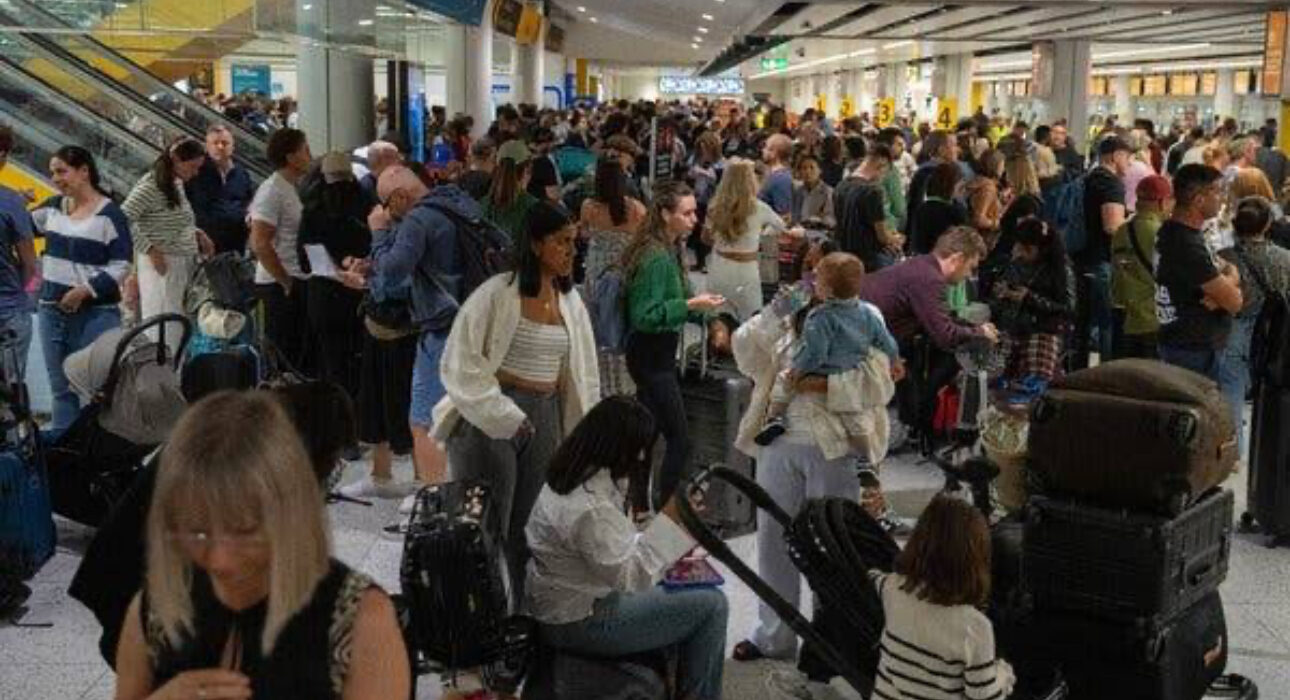UK Flights Disrupted by Technical Glitch at Air Traffic Control Centre

Flights across the United Kingdom experienced significant delays and cancellations on Tuesday, July 30, following a major technical fault at the Swanwick Air Traffic Control Centre in Hampshire. The disruption affected operations nationwide and led to the grounding of aircraft for nearly 20 minutes during one of the busiest travel periods of the summer.
According to the National Air Traffic Services (NATS), the issue began around 4:05 p.m. local time and was resolved by 4:25 p.m. However, the short outage had a widespread impact, forcing the agency to restrict the number of aircraft permitted to fly within UK airspace during the incident. Although services resumed soon after, the knock-on effect caused significant delays throughout the evening and into the following day.
Airports most affected included London Heathrow, Gatwick, Stansted, Manchester, and Edinburgh, with dozens of flights either cancelled, delayed, or diverted. Aviation data firm Cirium reported that as of 5:30 p.m., at least 45 departures and 35 arrivals had been cancelled, with Heathrow alone logging over 20 cancellations.
Airlines such as British Airways implemented emergency schedule adjustments, temporarily limiting departures and arrivals at major hubs to manage congestion. British Airways restricted traffic at Heathrow to just 32 flights per hour down from the usual 45 until conditions stabilized.
Transport Secretary Heidi Alexander confirmed that operations had resumed but warned that further delays were inevitable due to the backlog. Passengers were urged to check directly with their airlines for updates on their flight status.
The airline industry expressed frustration over the disruption. Ryanair called for the resignation of NATS CEO Martin Rolfe, accusing the agency of repeated operational failures. The airline referenced a similar incident in 2023 that affected hundreds of thousands of passengers and claimed Tuesday’s glitch was further proof of poor management and inadequate contingency planning.
Meanwhile, political pressure mounted for an independent investigation. The Liberal Democrats called for a full review of the causes of the disruption and demanded transparency on whether any cybersecurity threats were involved.
Despite the large-scale inconvenience, authorities have confirmed that the incident was purely technical, with no indication of a cyberattack or external interference. NATS has not yet provided specific details about the cause of the glitch but said it is conducting a full internal review.
Under UK aviation laws, passengers affected by such delays are entitled to care and assistance such as food, accommodation, and communication but are unlikely to receive financial compensation, as air traffic control failures fall under “extraordinary circumstances” beyond airline control.
As the system returns to normal, airlines continue to work through the backlog of delayed flights, with some passengers expected to face overnight delays or rebookings. The event has once again raised questions about the reliability of the UK’s air traffic infrastructure and the preparedness of the system to handle peak travel seasons.









